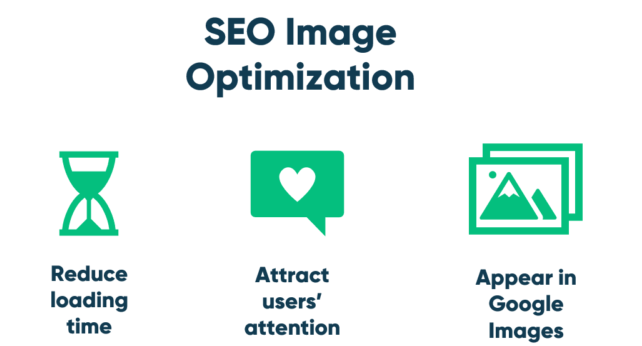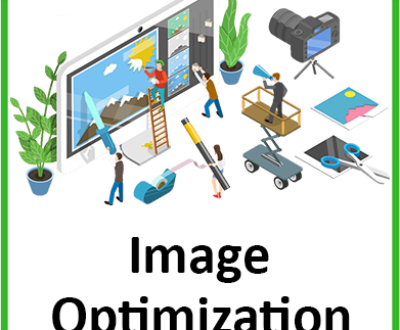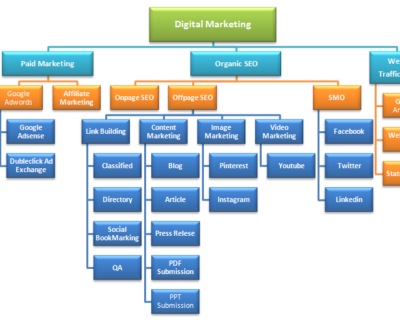Evaluate image search opportunities
First, fundamental, step to understand if image SEO can be interesting for you is to verify the current contribution that images give to your site in terms of traffic and visibility.
To do this you can just open the Performance report within Google Search Console, apply a filter to the Search type considered for data and select “Images”.
The metrics you get (impressions, clicks, etc..) are now related to image search only and show you how your current content assets are performing on Google.
Once verified how the images of your site are displayed in organic results and how many clicks form images searches your pages are receiving, the next step is to identify the queries for which relevant images have more chances to appear in SERP.
Google image search gets great exposer within the search results. Images are returned for 19% of search queries on Google.
When adding written content to your website, you do everything you can to make sure you’re practicing the best SEO strategies. You want to drive traffic to your site and convert visitors into customers. Optimizing your images for SEO accomplishes the same goal. Images on your site are yet another avenue to bring business right to your online doorstep so folks can see that you, more so than anyone else, have the solutions they’re looking for.

10 Tips to Do SEO Image Optimization Correctly
So SEO optimization is crucial for your images; you know that. So how do you drive more traffic from Google image search and get your images to show up in the organic search results? We’ve gathered a list of ten tips to help you do SEO image optimization correctly.
Describe the Image Accurately
When Google’s web crawlers are perusing your site to see what you should be ranking for, they don’t neglect your images. But because Google can’t see, it can only interpret the text; it’s your responsibility to make sure you name your image file correctly. Be as specific as possible when naming the file. Don’t ever abbreviate the text, and be sure to separate the keywords in the descriptions with hyphens. If you forget to make these changes, you’re missing out on an easy way to optimize for SEO.
Change Your Image Resolution
The resolutions in your image refer to the number of pixels it has: the larger your image, the higher your resolution, and the more pixels it contains. The higher the resolution, the more space it takes up, and the longer the image will take to load. Because every second count when a visitor comes to your site, you want to make sure you use only the highest resolution necessary. Slow load time will almost always cause you to lose traffic.
Choose the Correct Format
As you put your site together, you have the freedom to choose image formats. Depending on your image or what you’re trying to accomplish, you have a couple of choices. These two aren’t the only image formats out there, but for the sake of practicality, we’ll just include the two most popular formats on our list:
- JPEG – JPEG is the perfect format for larger photos or illustrations. We recommend JPEG if you’re including professional photography where capturing every nuanced detail is really important.
- PNG – This format typically gives you great image quality, but it also comes with larger file size. PNG is perfect for daily use, like if you’re adding a logo or screenshot of text.
Add Images to Your Sitemap
Your sitemap is a roadmap of everything on your site. If you include images, why not add them on your sitemap? This gives Google a heads up that you’ve got content other than written text on your pages, and Google loves diverse content. If you leave out your images when creating your sitemap, Google’s crawlers may never find them. Any way you can get Google to notice your page—in a positive light—is good for your SEO, so go ahead and include your images in your sitemaps.
Make Images Responsive to Mobile
You’ve probably read blogs repeatedly, urging site builders to ensure that all site pages are optimized for mobile users. After all, mobile devices are the most common way users will make a search on Google.
But we still have to say it: optimize your images so that they’re responsive on mobile devices. The easiest way to do this is to use a website that is mobile responsive. That means you don’t have to zoom in—or out—on an image to take it in. What was once a trendy step in marketing is now a necessary action if you want to optimize your SEO efforts.
Think about Image Placement
This may seem like a no-brainer, but your images need to be placed strategically. Have you ever come across a page that’s got great graphics, but you don’t understand why the image is there? It makes the site seem less legitimate, and like the people behind the design didn’t think things through. You don’t want that association with your brand! Be sure that your images are placed in a location on your page that makes sense and flows with the written content.
Additionally, be mindful of image alignment. Depending on what you’re trying to accomplish, you want diversity in your image positioning. If you’re writing a blog, consider different alignments throughout your text. If you’re in retail, you want image placement to be more uniform. Think about how your images are used, your goal, and then go from there to create an aesthetically appealing layout.
Diversify Your Images
When adding images to your pages, explore the options. You don’t have to be relegated to one type of image. You don’t even have to stick to photographs. You can add illustrations, memes, gifs, infographics, charts, graphs, or anything else that works—and is on-brand. In the process of switching up the image types you use, don’t get so carried away that you become caught up in having fun or making a statement and forget to represent your brand.
Create Unique Images
One of the first rules of great site curation is to stay away from stock photos! You’ll read blogs giving the thumbs up to stock photos as long as you’re careful to choose unique images. We recommend against that. People have a knack for picking out stock photos from a mile away; your client base is perceptive. If you’re wanting to use photographs on your site, consider investing in a professional photographer or even buying photographs online. Even a five-dollar photo is going to leave a different impression than a stock photo you pull from somewhere random off the internet.
Add Captions
Image captions are a fantastic way to both serve your user and capitalize on keyword rankings. They provide context to your reader and help them better understand your image (so you’re not doing all of this work in vain!) Once you’ve done keyword research and implemented your findings into your written content, include more keywords in your image captions for an extra SEO boost.
Add Alt Text
Alt text, or the alt tag, is an image description added in the event that the user can’t view your image for some reason. This might happen if your site visitor has visual impairments or even if images are turned off on their device. Add alt text to your images ensures accessibility and clarity for all of your users, so you communicate all of your information effectively, even if they can’t see your graphics.
Conclusion
Every day, Google seems to get smarter and smarter. They continuously update the algorithms to ensure they’re giving users exactly what they want. When you follow our tips to optimize your images for SEO, you can be sure you’re painting your site in a good light and that Google will reward you with higher and higher rankings.
About us and this blog
We are a digital marketing company with a focus on helping our customers achieve great results across several key areas.
Request a free quote
We offer professional SEO services that help websites increase their organic search score drastically in order to compete for the highest rankings even when it comes to highly competitive keywords.
Subscribe to our newsletter!
More from our blog
See all postsRecent Posts
- What are Web Stories and their importance? July 30, 2022
- What are Paid Ads and Advantages of Paid Ads? July 29, 2022
- How Web 2.0 is Different from the Web 3.0? July 28, 2022















